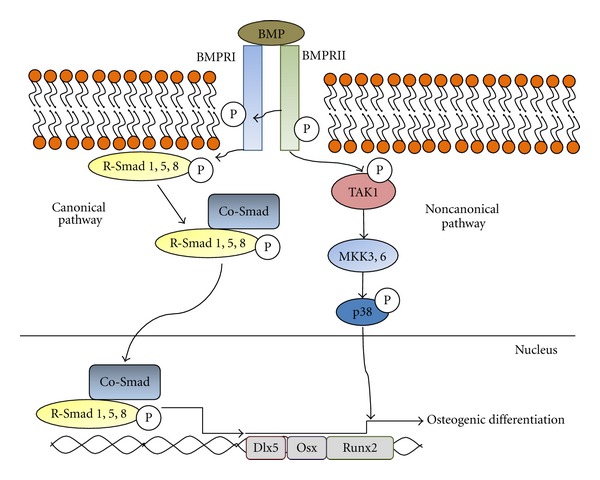Figure 1.

The canonical Smad-mediated and Smad-independent p38 MAPK pathways for BMP signal transduction are shown. In the Smad-mediated pathway, the activation of the BMP receptor complex by BMP ligand interaction leads to phosphorylation of R-Smads 1, 5, and 8, freeing them from the internal surface of the cell membrane. This enables the interaction between R-Smads and Co-Smad proteins, subsequently resulting in exposure of nuclear import sequences that permit the heteromeric complexes to enter the nucleus and activate transcription of osteogenic genes Dlx5, Osterix, and Runx2. In the Smad-independent pathway phosphorylation of TAK1 by the BMP ligand-receptor complex leads to signal transduction through the p38 MAP kinase pathway, resulting in transcription of Runx2.
